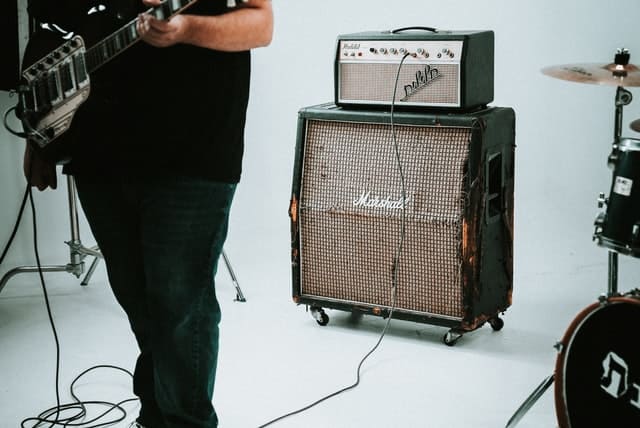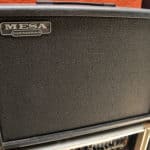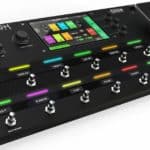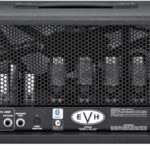Once you get your guitar, your set of effects, and amp head it is time to choose your cabinet.
Needless to say, you will look for speaker cabs that suit your style better but how can you do that?
How much important are they in defining tone?
Which one should I get?
Relax and continue reading, I’ve got you covered.
Cabinets have an impact on tone, depending mostly on their size, material, construction, and where they are placed in the room. Nevertheless, speaker cabinets are not thought of as being as influential on sound as the speakers within them are.
Although this decision will be full of confusing aspects and maybe also overwhelming, I will be here to help you with your choice.
Through this article I will try to clarify every doubt concerning this topìc, in the end, you will know everything about this interesting issue.
Do all speaker cabinets sound the same?
As you may infer, when talking about speaker cabinets many aspects should be considered.
Cabinets are the shapers of the resulting chain that happens before, they add resonance and different hues to the final sound.
Therefore, not all cabinets will sound equal, their outcome will depend on many factors and also the place they are within the room.
The size, the materials used in the construction, and the baffle construction are some of the features that influence a cabinet speaker’s performance.
What are the factors that make speaker cabinets sound different?
Apart from the place they take in a room, many factors could make speaker cabinets change their sound and performance.
The most common are: the design or construction type (open or closed back), the crafting materials such as Tolex, grills, and wood (being the latter the most influential of the three), the size, and even the baffle construction.
What kind of speaker cabinets sound best?
We often point out that what is “best” will always depend on what you are looking for, in terms of speaker cabinets what sounds great for a specific genre could be completely disgusting for others.
Furthermore, this answer is usually up to the player, for instance, a robust, closed-back cab is wonderful if you intend to play heavy rock whereas a solid-wood, open-back cab could be the choice for blues.
I encourage you to try as many types as you can, in that way you will have a wider panorama of the existing options.
Remember that there are no “worst” or “better” regarding tone issues, you have to evaluate your taste, and your likes and choose what suits your playing style.
Is the material of a speaker cabinet important?
Like with everything in life, the materials involved in any crafting matter, although some of them won’t be way influential, they affect how the equipment will work.
When talking about materials what comes to our minds are generally Tolex, grills, and wood, Tolex is a trade name for a flexible material that works as the cab cover, it protects the equipment due to being waterproof but is not an affecting component concerning tone.
Grills follow the same line, they are located right in front of the cabinet and are intended to protect the internal components allowing the sound to pass clearly, they could be soft or hard but, in the same way, that happens with Tolex, they do not take an important role in affecting the sound.
Last but not least, we have the kind of wood used, contrary to the other materials, wood does influence the performance of the gear, and different sorts of wood provide dissimilar results.
Solid woods such as pine or cedar, which are the most commonly used in guitar cab crafting, produce a broader resonance than plywood or chipboard.
That’s why those materials are solid wood, through the resonance, they contribute to warmen the sound but where you have resonance you also have absorption of sound which will lead to slightly blurry the notes.
Oppositely, plywood does not give as much resonance as solid wood but what does instead is to leave your equipment to achieve louder output and will also project much more than a pine cab.
Although they are less resonant than solid wood, plywood cabs offer a punchier sound plus a tight performance.
Is the size of a speaker cabinet important?
The cab sound is determined by many aspects, the size is one of the most defining factors.
Speaker cabinets of different sizes will sound quite different, smaller equipment doesn’t usually provide a well-defined low end plus they sometimes sound boxy and thin while bigger cabinets will produce more bass.
That occurs because the sound needs enough internal space to develop properly and show as much realistic output as possible, the room space available will affect it as well.
As said earlier, none of them is better or worst, whereas little cabs could sound lighter, excessively large equipment could produce more low end than needed, making the sound boomy.
As you may notice, speaker enclosure size does influence the resultant output, therefore, try to test various sizes and see what sounds better to you.
Usually, units in the middle between too big and too tiny are the way to go.
Most popular sizes of speaker cabinets and their sound
Speaker cabinets come in several sizes, depending on what you want to do, one or the other could fit better to your expectations.
Down below I will leave you a shortlist explaining how three of the most common speaker cabinets perform according to their size.
1×12
These cabs are the best option if you intend to play at bedroom levels, at home, or in small places. In guitar combo amps such as Fender Blues Jr or Vox AC15, you will find the mentioned size, they are great for rock or blues due to they can easily break up.
2×12
As regards 2×12, they are similar to the one discussed above but with an additional speaker, as they double the 1×12 they provide more output volume which makes them perfect for larger gigs.
The interesting feature is that as you have one more speaker you will be able to change one of them, giving your sound wider hues.
4×12
As you may notice, they are the loudest cabs and if you have to play at huge concerts 4×12 are quintessential.
Nevertheless, because of their size, they are intended for big gigs, so having them at home could be a problem of space.
Regarding each cab’s sound, the most distinguishable aspect is the number of low frequencies they provide, the bigger the cab is, the more bass it produces.
Concerning other tone features, they will be influenced more by other components such as the wood or the construction type (more about this later) rather than the size of the equipment.
Open back cabinets vs closed back cabinets
The decision of building a cabinet with an open or closed back may seem simple but contrary to what you might think, is one of the most important factors as regards sound.
Open-backed cabinets are in fact partially opened, a panel cover half of the back part of them.
Furthermore, that allows the sound to spread freely from the back and, at a lower degree, extend to the sides, as they are opened the result is a more filling and natural sound.
In addition, high frequencies are better accentuated plus they present a wider presence.
Concerning low frequencies, they are a bit lightened up because of the opened rear part of the cab.
Moreover, it also helps to reduce low-end bloomy and woofy sound but it doesn’t provide such a full, direct, thick sound as closed cabs.
On the other side, closed-back cabinet speakers are only able to reflect sound forwards, by using these cabs you will get a crispier sound definition plus a punchier output.
What is more, these cabs have greater strength in low frequencies plus the midrange is hardened and more accentuated.
Contrary to open-backed gears, these tend to attenuate high frequencies, provide more directional sound projection, and avoid back spilling.
As a result, there are no side or back leaks, sounding softer from behind.
Will the same set of speakers sound different in 2 different cabinets?
We have stated countless times that everything has to do with and influences the sound, so we can assume that the upshot obtained by using the same speakers in two different cabinets would be non-identical.
However, speakers raise more importance when defining the tone than the amp, therefore, although the final product won’t be the same, there won’t be further differences.
What is more important, the speaker cabinet or the speakers?
Most musicians claim that cabinets are more influential than speakers, but let me tell you that is not true at all.
Although they are the last link in the chain, cabinets have a lot of the tone picked up and modeled by the speakers before.
Everything starts with the speakers, a crappy speaker ran through a high-end cabinet will still sound awful while the best speaker might be ruined by the worst cabinet but it’s unlikely to happen.
Therefore, I would say that speakers are super important regarding tone, they have greater importance in defining it, even more than cabinets.

Hello there, my name is Ramiro and I’ve been playing guitar for almost 20 years. I’m obsessed with everything gear-related and I thought it might be worth sharing it. From guitars, pedals, amps, and synths to studio gear and production tips, I hope you find what I post here useful, and I’ll try my best to keep it entertaining also.





